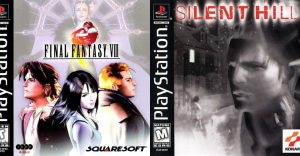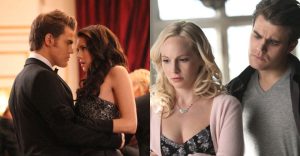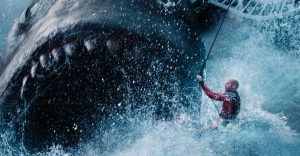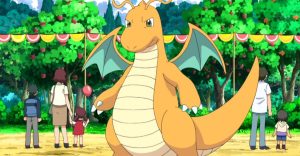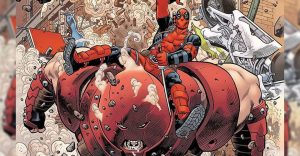Every Marvel Movie That Isn’t Part Of The MCU

Well before the Marvel Cinematic Universe, live-action movies were adapting Marvel’s famous characters and laying the groundwork for the rise of superhero movies in the 2010s. Prior to the release of Iron Man in 2008, the first official entry into the official MCU, Marvel’s comic-book adaptations were often regarded as critical failures that didn’t manage to capture the magic or whimsy of the comics such as the critically maligned Daredevil or Fantastic Four.
After the commercial and critical failure of Howard the Duck, Marvel was facing bankruptcy and chose to sell the movie rights to its most well-known properties, including the X-Men and The Fantastic Four. After previous failed attempts to find a distributor for their movies, Marvel Entertainment – now known as Marvel Studios – was purchased by Disney in 2008. Despite that, the film rights to most of Marvel’s characters still belonged to other studios (primarily 20th Century Fox, as well as Columbia Pictures) and preexisting film deals were not affected in the merger. As a result, some of the biggest Marvel film franchises, including the X-Men film series and two of the Spider-Man adaptations, exist outside of the Marvel Cinematic Universe entirely.
Why Comic Accurate Superhero Costumes Make More Sense In MCU Phase 4
Disney famously acquired 20th Century Fox in 2019. A major effect of the merger is that almost all of the Marvel characters that have previously existed outside of the Marvel Cinematic Universe have now reverted back to Marvel Studios – although the preexisting movies do not fall under that umbrella. Marvel has announced plans to reboot many of the franchises that are back under their ownership and integrate them into the MCU, and Disney+ has started rebranding Marvel movies that don’t fall under the MCU banner as Marvel Legacy movies. There is a long history of Marvel films that exist outside of the Marvel Cinematic Universe that are stylistically very different from the MCU, but many of them remain – if not good – then very, very watchable. Here’s every Marvel movie that isn’t part of the MCU.
Captain America Serial Film / Return of Captain America (1944)

Marvel’s first movie dates back to a time when Marvel was still called Timely Comics. Republic’s Captain America serial motion picture, released in 1944, follows District Attorney Grant Gardner instead of Steve Rogers. Gardner goes after the evil Dr. Maldor after his secretary is kidnapped, and tries to prevent him from using a “Dynamic Vibrator” to unleash a toxic chemical called “Purple Death.” The film is evidently a product of its time both in format and narrative approach, as it was a campy low-budget serial (i.e. theatrical series) with outdated tropes. It was Republic’s last serial movie based on a superhero — with other notable releases being DC’s Captain Marvel and Batman — and was re-released as Return of Captain America in 1953.
The Bill Bixby & Lou Ferrigno Incredible Hulk Movies (1977–1990)

One of the most successful live-action adaptations Marvel boasted before the MCU was the 1977 The Incredible Hulk TV show, starring Bill Bixby as David Banner and Lou Ferrigno as his muscle-bound alter ego The Hulk. Banner’s tragic story starts with a one-hour movie also called The Incredible Hulk, followed by a slightly more comedic The Return of The Incredible Hulk, 1988’s The Incredible Hulk Returns (which also featured the first live-action version of Thor and his Midgardian alter ego Donald Blake), 1989’s The Trial of The Incredible Hulk (featuring Matt Murdock aka Daredevil), and the tragic 1990 finale The Death of The Incredible Hulk. The movies and the show are known for capturing the pain of Hulk’s duality, and their influence can even be felt throughout Hulk’s MCU journey.
Columbia Pictures’ Spider-Man (1977–1981)

Although Spider-Man’s earliest live-action adventures are now mainly the target of memes, they were actually well-received at the time of their original release. Columbia Pictures demonstrated how visually stunning the famous hero could be on the big screen in 1977 with practical effects and a real stuntman web-slinging and wall-crawling on set. Nicholas Hammond stars in the 1977 film, as well as the TV show and the two theatrical sequels Spider-Man Strikes Back and Spider-Man: The Dragon’s Challenge. Spider-Man’s first-ever movie trilogy may not look serious by today’s standards, but it still holds up as a somewhat accurate adaptation of the tone of the comics from the silver and the bronze age of comic books.
Toei’s Spider-Man (1978)

Toei’s 1978 Spider-Man is a theatrical movie that is also part of a popular TV show at the time. In the show, Shinji Tōdō plays Takuya Yamashiro, a bike racer who comes into contact with an alien spaceship called The Marveller. Garia, the last survivor of Planet Spider, is the one who gives Takuya his powers through a blood transfusion. The incident also causes the evil Professor Monster and his evil Iron Cross Army to become Takuya’s archnemesis. The 1978 movie, set between episodes 10 and 11 of the show, sees Spider-Man teaming up with Interpol agent Jūzō Mamiya and transforming The Marveller into a huge robot to fight a monster called Sea-Devil. Clearly, Toei’s Spider-Man has almost nothing to do with Marvel’s character, but that doesn’t mean the movie and the TV show aren’t a weird kind of fun.
Dr. Strange (1978)

Dr. Strange is a feature-length TV pilot for CBS that served as an origin story for the Sorcerer Supreme in a story that unfortunately hasn’t seen the light of day. Unlike the contemporary series The Incredibly Hulk and despite Stan Lee’s involvement as a consultant, Dr. Strange wasn’t picked up by CBS. The movie had the potential to be a cheesy yet fun take on the Sorcerer Supreme, but was only followed by the 1992 movie Doctor Mordrid, which was also supposed to be an official Doctor Strange adaptation at first but lost the opportunity to adapt the character.
Captain America (1979–1990)

Captain America’s first three movies are among the cheesiest of Marvel’s releases. 1979’s Captain America and Captain America II: Death Too Soon follow a motorcycle-riding version of Steve Rogers who gets his superhero identity and powers from his father. 1990’s Captain America is a bit more comic-accurate, with Steve Rogers being frozen and thawed, a deformed Red Skull wanting to destroy the United States with a nuclear bomb, and a Captain America costume that is a little bit too accurate for its own good.
Howard the Duck (1986)

Howard the Duck is a 1986 science-fiction comedy based on Marvel’s irreverent anthropomorphic duck. Although the movie was originally supposed to be an animated film, it became live-action due to a contractual obligation. Back to the Future‘s Lea Thompson stars as Beverly Switzler and Chip Zien voices the titular anti-hero. Unfortunately, Howard the Duck was a critical and commercial failure. Critics and audiences mostly disliked the bizarre story and humor. As a result, the movie has often been included in “worst movies of all time” lists and comic-book adaptations got a bad reputation for some time afterward. The MCU hasn’t given Howard the Duck a major role, but the anthropomorphic duck has had its chance to shine as a cameo character in the Guardians of the Galaxy movies and in Marvel’s What If…?.
The Punisher Movies (1989–2008)

Just like the comic book anti-hero and Netflix’s 2017 series, the Punisher movies have been some of the most violent Marvel films ever released. Action movie icon and Rocky IV actor Dolph Lundgren stars as Frank Castle in the first The Punisher. Lundgren doesn’t wear Castle’s classic skull symbol and fights the Yakuza to defend the surviving children of the mob he used to torment. Thomas Jane stars in 2004’s The Punisher, where he confronts the crime boss who had his family killed, John Travolta’s Howard Saint. Lastly, Ray Stevenson (who plays Volstagg in the MCU) starred in 2008’s The Punisher: War Zone, with Dominic West as the most accurate and intimidating live-action depiction of Jigsaw to date. Thomas Jane reprised his role as Frank Castle in 2012’s The Punisher: Dirty Laundry, a short fan film that was received with wide praise for its faithfulness to the character and high production value.
Fantastic Four (1994)
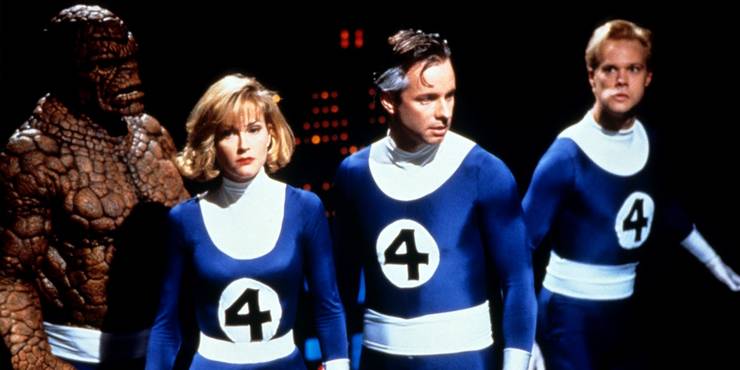
Like the previous failed Captain America and Doctor Strange movies, the first Fantastic Four wasn’t made with the same ambition as many of Marvel’s most recent blockbusters. But this time, allegedly, the movie wasn’t supposed to be released because it was only made as a way to keep the movie rights of the title from expiring. Unaware of this, the cast witnessed how all promotion for the film was canceled, with the producers even intending to get rid of every single copy of the final product. Fortunately, the movie still exists as a unique part of Marvel history, but its obvious low budget and bare-bones story are enough to confirm why it was never intended to be a “real” Marvel film.
Generation X (1996)

Based on the eponymous mutant team of the 1990s, Generation X is perhaps one of the most overlooked of the early Marvel movies. Jubilee serves as the protagonist, with Emma Frost as the mentor figure and Doctor Russel Tresh as the main villain. Other mutants include Banshee, M, Mondo, Skin, Buff, and Refrax — the latter of which is a Cyclops stand-in. The movie shares some similarities with Fox’s famous X-Men movies regarding its basic themes of mutant exclusion, and with New Mutants, as it follows a team of teenage students who begin to familiarize themselves with their powers at Xavier School for Gifted Youngsters.
Nick Fury: Agent of S.H.I.E.L.D. (1998)

Nick Fury: Agent of S.H.I.E.L.D. is yet another feature-length pilot for a failed Marvel TV series. Baywatch star David Hasselhoff stars as the titular spy, who was based on the original version of the comic-book Nick Fury (before Marvel took inspiration from Samuel Jackson to revamp the character). The movie featured lots of Captain America-related characters such as Dr. Arnim Zola, the Von Strucker family, Dum Dum Dugan, and Valentina Allegra de Fontaine — who made her MCU debut in The Falcon and the Winter Soldier and appears to be a key player in Phase 4. David Hasselhoff has since made a cameo in Guardians of the Galaxy as one of the forms Ego takes to manipulate Peter Quill into joining him.
The Blade Trilogy (1998-2004)

Blade is a 1998 superhero horror film directed by Stephen Norrington and starring Wesley Snipes in the title role. Blade follows A Dhampir (a human with vampire strengths but no weaknesses) who fights vampires, most notably Deacon Frost. The movie is widely regarded as Marvel’ most important step toward blockbuster success. Blade struck a note with critics and audiences, spawned two sequels, and gave superhero movies a boost in reputation. It spawned two sequels: Blade II and Blade: Trinity. Unfortunately, the third installment is now popularly regarded as one of the worst superhero movies due to its disjointed story and humor, as well as its troubled production. Nevertheless, the trilogy set the stage for Sam Raimi’s famous Spider-Man movies. At the 2019 San Diego Comic-Con, Marvel Studios announced that it would be rebooting the character and integrating Blade into the Marvel Cinematic Universe as part of the Phase 5 slate of films.
The X-Men Franchise (2000-2019)

Although the X-Men movies are based on Marvel Comics, 20th Century Fox held the film rights to the franchise until 2019, when Marvel Studios finally acquired X-Men with Disney’s acquisition of Fox. 20th Century Fox first obtained the rights to X-Men in 1994, and Bryan Singer was hired to direct the first two films. The original X-Men trilogy includes X-Men (2000), X2 (2003), and X-Men: The Last Stand (2006). Each new movie outgrossed its predecessor at the box office, which led to the first spin-off films – X-Men Origins: Wolverine (2009) and The Wolverine (2013) – to be released.
The X-Men franchise was soft-rebooted in 2011 with a prequel series, which focuses on the creation of the X-Men and the longtime friendship between Magneto and Professor X and featured a mostly brand-new cast with minor appearances from original cast members. The first film, X-Men: First Class (2011), is set in 1962 and focuses on the origins of the X-Men. X-Men: Days of Future Past (2014) takes place after the events of The Wolverine, but Wolverine travels back to 1973 to prevent an assassination that might threaten the existence of all future mutants. X-Men: Apocalypse (2016) takes place a decade after X-Men: Days of Future Past and was intended to complete the trilogy that began with X-Men: First Class. Dark Phoenix (2019) takes place a decade after that and revisits the Dark Phoenix saga after X-Men: Days of Future Past erased the events of X-Men: The Last Stand from the timeline of the series.
The third wave of X-Men movies have taken a turn toward darker and more mature content, including Deadpool (2016), Deadpool 2 (2018), and Logan (2017). All three of these films are rated R and are thematically extremely different from the Marvel Cinematic Universe. Whereas MCU movies tend to be bright and quippy, the Deadpool movies and Logan are gritty and violent. They are also the most critically acclaimed X-Men movies, in part because of their deviation from the style of Marvel Studios. The final X-Men movie, New Mutants, was released in 2020. The film will not have a sequel, since Disney’s acquisition of 20th Century Fox has effectively ended the X-Men franchise as it currently exists. All of the X-Men movies are now technically owned by Marvel Studios, but are not a part of the Marvel Cinematic Universe. Instead, they’ve been rebranded on Disney+ as Marvel Legacy Movies.
Related: Everything X-Men: Days of Future Past’s Rogue Cut Changes
The only overlap between Fox’s X-Men movies and the Marvel Cinematic Universe so far has been the appearance of Evan Peters in WandaVision. Peters had previously played Peter Maximoff aka Quicksilver in X-Men: Days of Future Past and X-Men: Apocalypse, but despite Peters’ role as Pietro (portrayed by Aaron Taylor-Johnson in the MCU), the Disney+ show revealed that he wasn’t the same character, meaning that Marvel Studios wasn’t really incorporating Fox’s mutant characters, at least not yet.
Sam Raimi’s Spider-Man Trilogy (2002-2007)

Sam Raimi’s Spider-Man (2002) was the first installment in the trilogy, which also included Spider-Man 2 (2004) and Spider-Man 3 (2007). James Cameron intended to write and direct the first installment, and one of the only elements from his drafts that remained in the trilogy was Peter Parker’s biological ability to shoot webs out of his wrists. Sam Raimi’s trilogy has been credited for redefining the modern superhero genre and continued to revitalize Marvel after Blade. A fourth movie was canceled after Raimi withdrew from the project over creative differences, and Marvel has subsequently rebooted the Spider-Man series twice.
Spider-Man: No Way Home is incorporating characters from Sam Raimi’s Spider-Man trilogy into the MCU, namely Alfred Molina’s Doctor Octopus and Willem Dafoe’s Green Goblin, with promotional material teasing the return of Thomas Haden-Church as Sandman. Fans also expect to see the return of Tobey Maguire’s Peter Parker and Kirsten Dunst’s Mary Jane, but their appearance hasn’t been confirmed yet. All of these appearances might make Sam Raimi’s trilogy part of the MCU’s canon through the multiverse.
Hulk (2003)
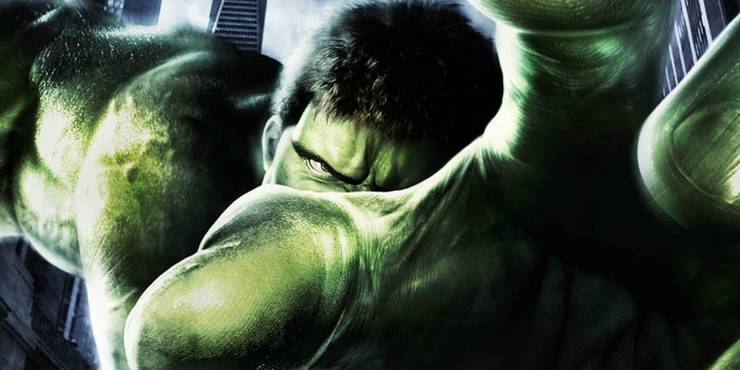
Hulk, directed by Ang Lee and starring Eric Bana in the title role, explores the origins of Bruce Banner. Not to be confused with the reboot The Incredible Hulk (2008), which is a part of the MCU, Hulk was critically panned for its overuse of CGI, but has received retrospective praise from critics for its artistic differences from other superhero movies. It has also recently been praised for Ang Lee’s thoughtful attempt to deal with Bruce Banner’s issues in Hulk instead of being a series of action setpieces, and for being a welcome deviation from typical superhero movies. Hulk had a planned sequel, but Universal Studios didn’t meet the deadline for submitting the film and the character rights reverted to Marvel Studios. The Incredible Hulk was then created by Marvel in association with Universal as the second installment in Phase 1 of the Marvel Cinematic Universe, and even though Edward Norton was replaced by Mark Ruffalo as Bruce Banner and the movie’s Hulk design has been reimagined, the events of The Incredible Hulk are still canon to the rest of the MCU.
Daredevil & Elektra (2003-2005)

Daredevil stars Ben Affleck as the titular character, a blind lawyer who fights as the masked vigilante Daredevil. Directed by Mark Steven-Johnson, Daredevil premiered to mixed reviews and was panned for being an overly dark and gritty mess. The film was also criticized by Stan Lee himself for misinterpreting the character. The 2005 spin-off film Elektra, starring Jennifer Garner, was a complete critical and commercial failure and is credited for being the reason that the planned sequel to Daredevil was canceled.
Fantastic Four & Fantastic Four: Rise of the Silver Surfer (2005-2007)

Fantastic Four was released in 2005 by 20th Century Fox and is based on the Marvel superhero team of the same name. Although Fantastic Four received mixed reviews, the film is still regarded as a commercial success. The sequel, Fantastic Four: Rise of the Silver Surfer was released in 2007 and is considered an improvement over the first film, but ultimately made less money than Fantastic Four and resulted in the cancellation of a planned third film.
Why Marvel Is Making A Fantastic 4 Movie Before X-Men
Man-Thing (2005)

A less popular non-MCU Marvel movie is Man-Thing, a dark suspense monster film based on the tragic character from the comics. The movie is much less action-oriented than most Marvel releases, and the special effects are surprisingly well done. However, it never got enough marketing or word-of-mouth to get remotely close to breaking even at the box office, let alone succeed commercially. Critics put the last nail in Man-Thing‘s coffin, and both the character and his movie remain quite obscure to mainstream audiences.
Ghost Rider & Ghost Rider: Spirit of Vengeance (2007-2011)

Ghost Rider was released in 2007 to overwhelmingly negative reviews, and starred Nicholas Cage in the title role. Although the film was panned, Ghost Rider was still a box office success, and the sequel Ghost Rider: Spirit of Vengeance was released in 2011 with Cage reprising his role. Marvel initially began development for a Ghost Rider adaptation in 1992, and the Nicholas Cage adaptation was announced in 2003 in a deal with Columbia Pictures. After the critical and commercial failure of Ghost Rider: Spirit of Vengeance, Cage publicly stated that he was done with the franchise and a planned third movie was canceled. Shortly after, the character rights reverted back to Marvel Studios and a different version of the character appeared on Agents of S.H.I.E.L.D.
The Amazing Spider-Man 1 & 2 (2012-2014)

The Amazing Spider-Man (2012) began development after the cancellation of Sam Raimi’s Spider-Man 4 and completely rebooted the series. The Amazing Spider-Man premiered to mostly positive reviews, but suffered from undeveloped storylines and a villain that was too surreal and unrealistic. The Amazing Spider-Man 2 (2014) was originally envisioned as the beginning of a shared fictional universe that would include films based on Venom and the Sinister Six, but a disappointing box office meant that all subsequent installments were canceled. Marvel rebooted Spider-Man for the third time in Captain America: Civil War (2016) with Tom Holland’s first appearance as the character in the MCU.
Like Sam Raimi’s trilogy, both The Amazing Spider-Man movies are being incorporated into the MCU in Spider-Man: No Way Home. Jamie Foxx’s return as Max Dillon aka Electro was the first to be confirmed for the MCU Spider-Man sequel. The first full trailer for Spider-Man: No Way Home briefly featured a large figure obscured by shadows, which prompted fans to speculate about the return of Rhys Ifan’s Lizard from The Amazing Spider-Man. With Doctor Octopus, Green Goblin, Sandman, Electro, and the Lizard expected to form the MCU’s multiversal Sinister Six, fans have also theorized that the last remaining member of the team will be Paul Giamatti’s Rhino. Naturally, Andrew Garfield’s reprisal of Peter Parker is highly anticipated (but not officially confirmed yet) and the return of Emma Stone as Gwen Stacy through the multiverse is still a possibility, despite her demise at the end of The Amazing Spider-Man 2.
Although Sony’s original plans to release movies centered on the Sinister Six and other Spider-Man villains was scrapped, the company is now building its own Marvel franchise with movies such as Venom, Venom: Let There Be Carnage, and Morbius. Sony’s cooperation with Marvel Studios allows both companies to share their characters with each other, as Michael Keaton’s Vulture will be part of Morbius and Venom has been confirmed to have entered the MCU during the post-credits scene of 2021’s Venom: Let There Be Carnage.
Fantastic Four (2015)

The 2015 reboot Fantastic Four, which is also based on the Marvel superhero team of the same name, was the third and final Fantastic Four film to be produced by 20th Century Fox. Production of the reboot was first announced in 2010 after the disappointment of Fantastic Four: Rise of the Silver Surfer and underwent massive reshoots. Fantastic Four had even worse reviews than Fantastic Four: Rise of the Silver Surfer and was critically panned for its screenplay, directing, lack of humor, visuals, pacing, and unfaithfulness to the source material. A planned sequel was canceled, and Marvel Studios acquired the film rights and announced a second reboot of Fantastic Four that would be set in the Marvel Cinematic Universe.
Every Mark Millar Comic Book Adaptation Ranked Worst To Best
On another note, Big Hero 6 and Spider-Man: Into the Spider-Verse are also Marvel movies, but they have no narrative connection to the MCU. Although their animated format suggests the MCU only includes live-action movies, the release of Marvel’s What If…? in Phase 4 and its canon connection to the MCU’s multiverse refutes that. Instead, Big Hero 6 is a standalone Disney movie inspired by the eponymous team in Marvel comics, and Sony’s Spider-Man: Into the Spider-Verse is the beginning of its own franchise, set within its own version of Marvel’s multiverse.
Marvel has a long history of failed movies, but an even longer one full of massive successes. Although many of the characters who starred in older movies are being folded back into the MCU now that the licensing rights belong to Marvel Studios, some of their most fun versions belong to Marvel movies that aren’t in the Marvel Cinematic Universe.
Every Upcoming Marvel Cinematic Universe Movie
- Eternals (2021)Release date: Nov 05, 2021
- Doctor Strange in the Multiverse of Madness (2022)Release date: May 06, 2022
- Thor: Love and Thunder (2022)Release date: Jul 08, 2022
- Black Panther: Wakanda Forever/Black Panther 2 (2022)Release date: Nov 11, 2022
- The Marvels/Captain Marvel 2 (2023)Release date: Feb 17, 2023
- Ant-Man and the Wasp: Quantumania (2023)Release date: Jul 28, 2023
- Guardians of the Galaxy Vol. 3 (2023)Release date: May 05, 2023
About The Author












